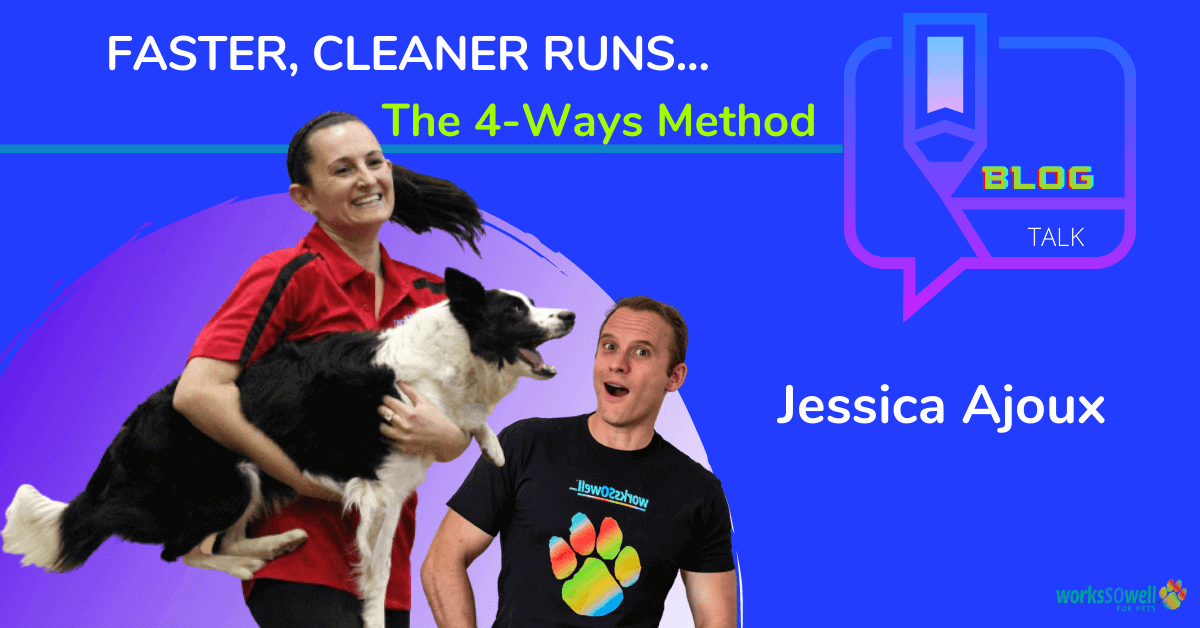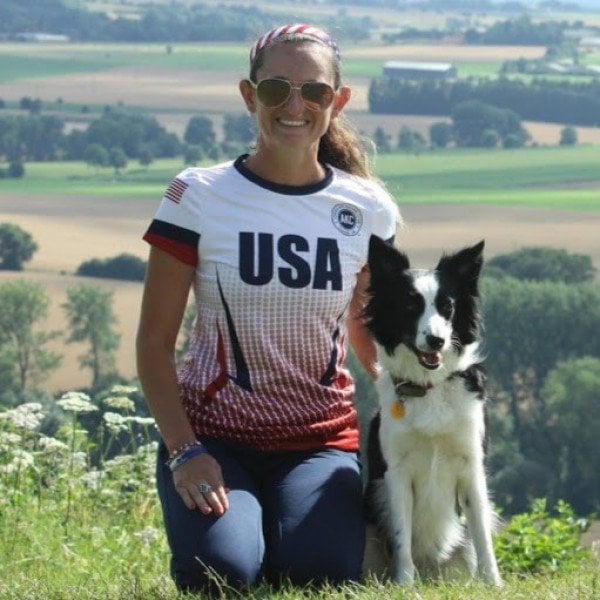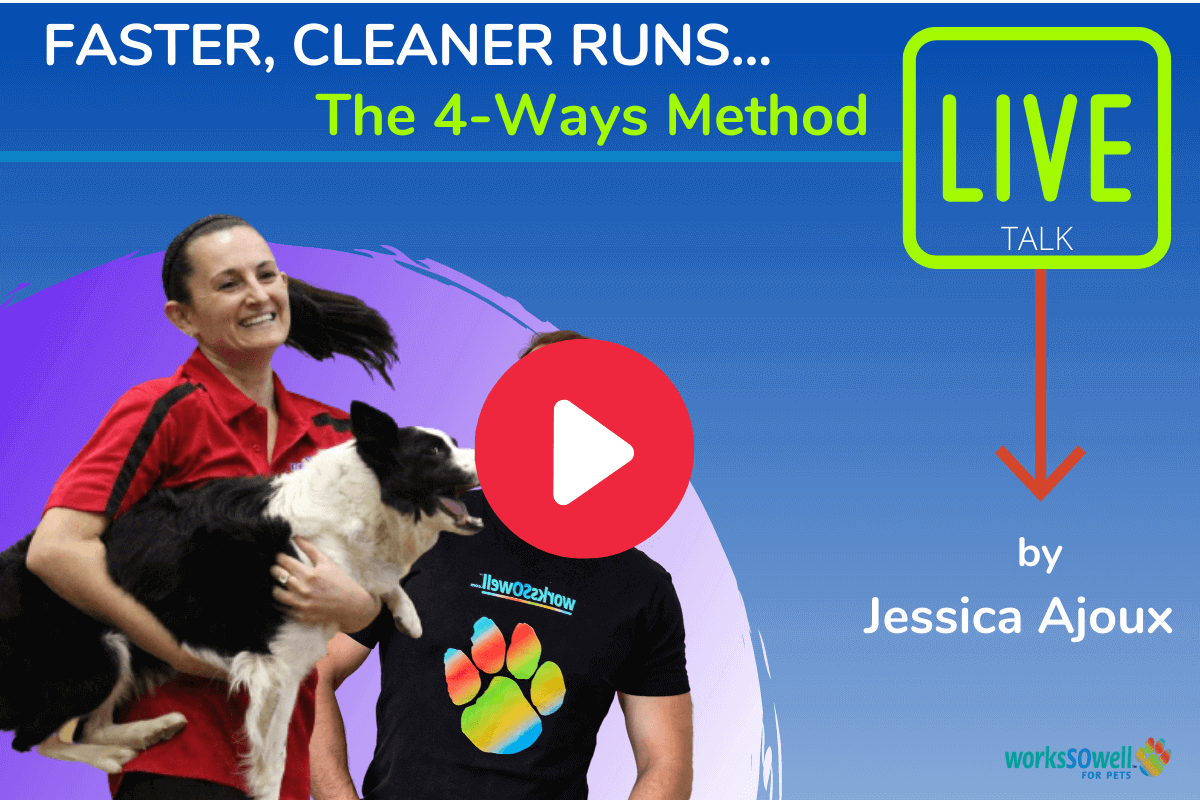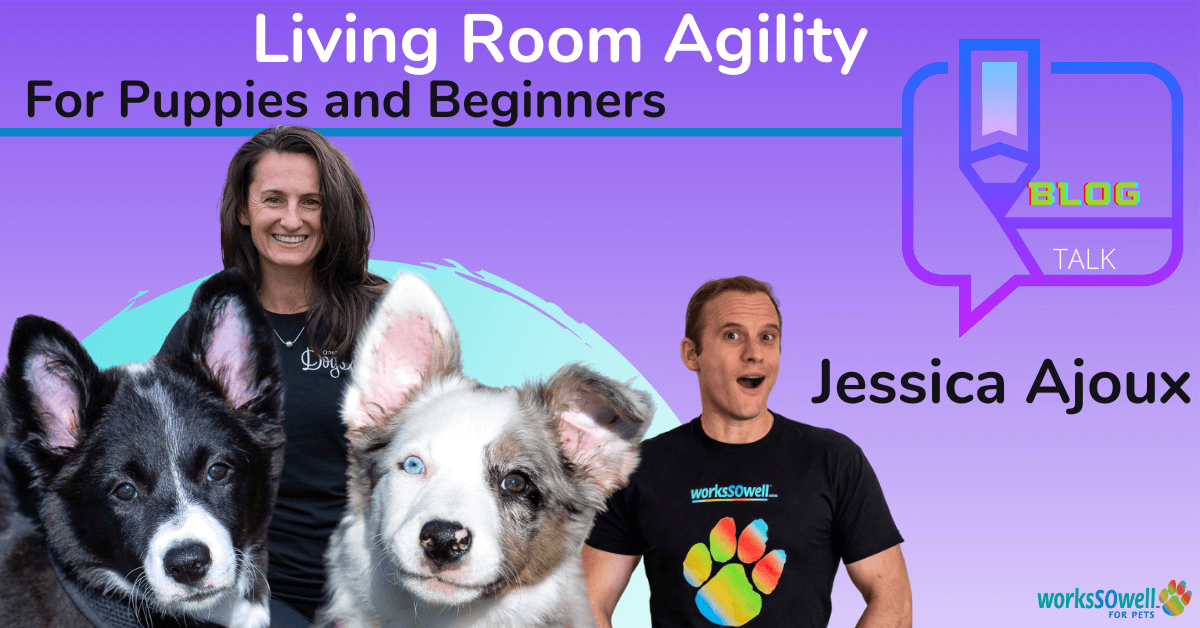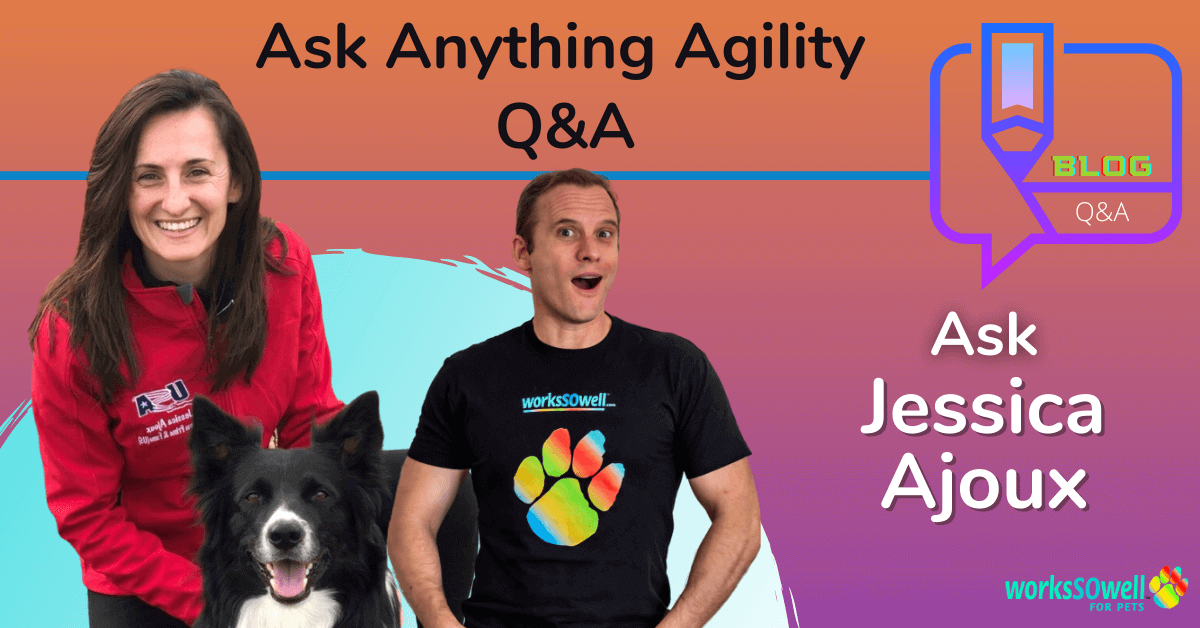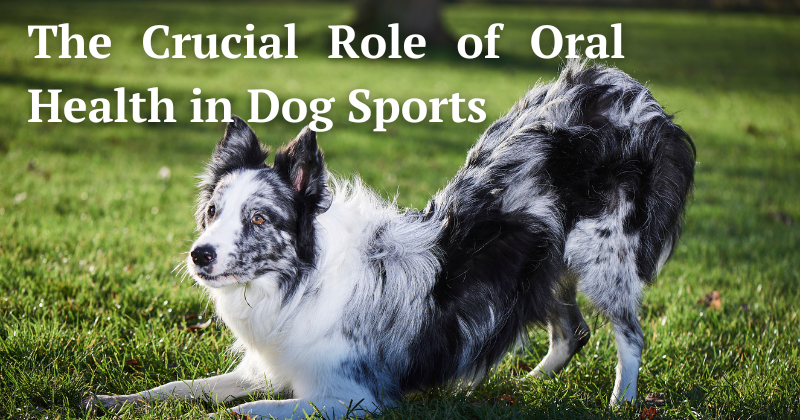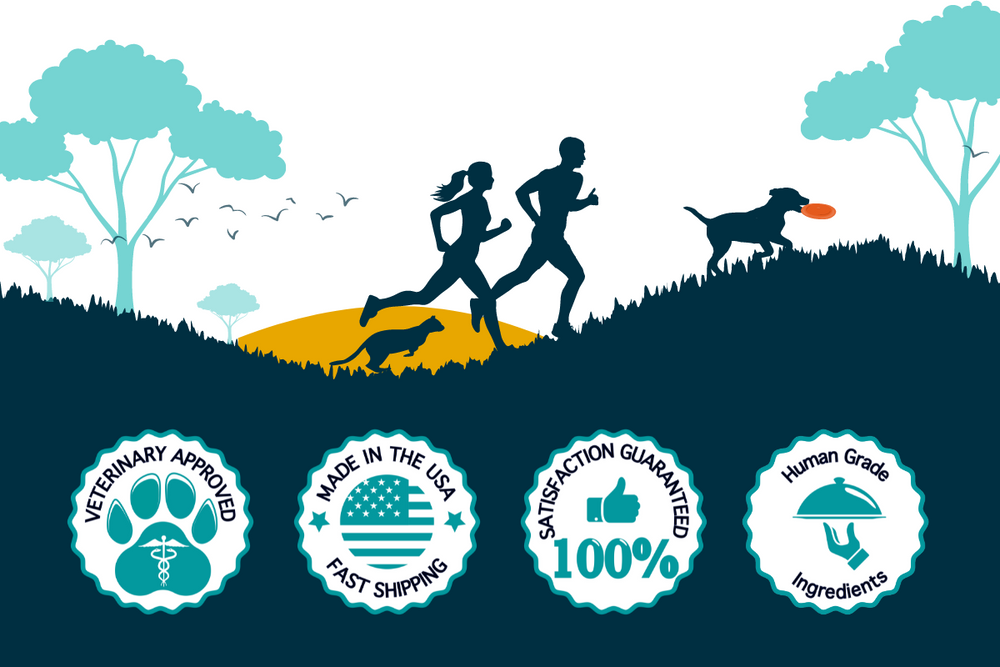Faster, Cleaner Runs: The Four-Ways Method by Jessica Ajoux
The 4-ways Method. You spend hours training your dog to respond to your commands, yet your athlete is limited in its ability to execute your commands based on your position in relation to your dog.
The ability to give your K9 athlete commands independently of your location (in front, behind, to the left, or right of your dog) provides them confidence to speed up and deliver cleaner runs. Jessica Ajoux tackles this problem through the four-ways training method. Get ready to be empowered!
Introduction to the Four-Ways Method
See the full live interview my clicking on image below.
Jessica Ajoux, the co-founder of UnitedDog Agility, was taught this method by her mentor Diane Bauman. It helps train dogs in agility. It’s such a good training approach that Jessica uses it every day and shares it with everyone she can think of.
Jessica and Diane even outlined it in the book they wrote in 2007, Agility: Start to Finish. This book is a comprehensive approach to agility, and this method is an integral part of that training.
They have since updated this book, turning it into an interactive e-book with lots of video (upwards of 70) and other resources. The four ways method is still in there, of course. You can find the updated version here!
Four ways refers to the dog being able to perform the obstacle with the handler being in front (the dog moving toward the handler), the handler behind them (moving away from the handler), and the handler on the left or the right (running alongside the dog at different paces).
Think of “call to,” “send,” and “run by” with dog on the left and “run by” with dog on the right. It’s a blueprint for training. Make sure you train all four ways on each obstacle to guarantee that your dog understands the obstacle regardless of where you are.
It’s important to teach all four ways because you don’t know what the course will entail each time. The obstacle could be in any orientation compared to the dog and the handler’s respective positions at any given time.
Some dogs will go full speed regardless, and some dogs will be hesitant. Speed comes with confidence and understanding. The more you teach the dog, the more prepared and confident they can be, which causes them to move more quickly. This also gives the handler the flexibility and confidence to be where they need to be.
Even if you think you can outrun your dog, and so therefore you don’t teach them the “send”, what happens if your dog decides to go faster and outruns you? You might be in a pickle because they won’t know how to do something if the handler is behind them. Then they may move slower again in order to avoid that lack of understanding.
Implementing the Method
Jessica teaches this method in this order: call to, send, then the run by (left or right can go first. That matters less.).
They start with the call to because in general, dogs want to come toward the handler. This helps them with motivation, and it keeps going them straight. When Jessica teaches two on/two off, which is a contact position, she always starts as a call to, keeping their body straight and going in the right direction. It’s easier to do that first.
As soon as dogs can do it as a call to, reverse it and do it as a send. The send is often trickier with training because dogs want to come toward you and are less motivated to move away from the handler. If your dog is trying to go away from you, they do a lot of turning and looking back. This learning gives them the confidence to conquer the obstacle.
Next is the run by with the dog running on one side or the other. At that point, the dog is more focused on accomplishing the obstacle that they can just do it. But some breeds need to learn it more specifically because of their level of distraction and attention.
If Jessica didn’t understand this concept, she wouldn’t be able to do her job. Whenever a student has a problem like a dog popping out of weaves for example, this is often because students haven’t trained her right from the get-go. But it’s like her diagnostic test. When a problem shows up, Jessica runs the test, checking all four ways.
Usually, the problem will come up within the call to or the send. That isolates the issue. Even if it’s not showing up on the course, it’s indicative of a hole in the foundation training which is the most difficult way for a dog can be dog-dependent.
With the call-to, Jessica typically identifies the chaser, the dogs who want to catch the handler rather than the obstacle. They will have a harder time there.
Dogs who rely on the handler for speed and support tend to have a harder time with the send because the handler is not helping them move forward. The run by is typically all right, but the super “herdy” dogs are distracted by handlers running alongside them sometimes.
A trainer can formulate a training plan based on where the dog is in mastering each step. If they are all set with the call to, then move onto the send. Work on the send as long as necessary before moving onto each run by. If there is an issue, once you know where that issue in the dog’s training is, you can train smarter because what you’re working on is actually the problem.
There are specific hand gestures and body language cues that are associated with each of the four ways, all of which are videos featured in the book. Jessica also created a special video for us in which you can see examples of each way.
When doing a send, you use an under-handed bowling motion to help show forward motion. When doing a call to, especially with dogs who rush, you use an overhand motion pointing toward the path of the dog. All signals are directed toward the path the dog is running on because if the dog is on the right path, it will find the correct obstacle successfully.
Contact Jessica
UnitedDog Agility on Facebook, Instagram, YouTube
Additional Resources
Dog Agility: From Start to Finish by Diane Bauman and Jessica Ajoux
Agility: Start to Finish (2007) by Diane Bauman and Jessica Ajoux
Jessica’s special video she mentions



